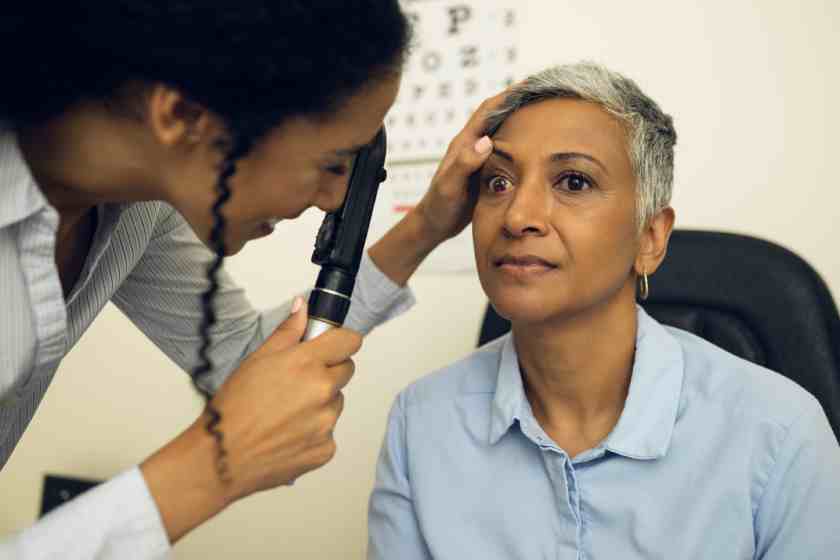Diabetes is one of the deadliest diseases known to mankind. It affects about 1 in 11 people worldwide. As for India, the numbers are heart-wrenching. A new study by Lancelot reveals that 11.4% of India’s population, 101 million individuals, are living with diabetes. Moreover, 15.3% of individuals could be living with pre-diabetes.
Unfortunate, isn’t it? What’s scarier is the complications that it brings. Diabetes increases the risk of the following:
- Heart attack
- Stroke
- Blindness
- Kidney failure
- Limb amputation
One such condition is Diabetic Retinopathy. By retina, you must have gauged that it is about the eyes, but what is it really? How do you spot it and manage it? What type of retina treatment does it require? Let’s find out.
What Is Diabetic Retinopathy?
Diabetic Retinopathy (DR) is a diabetes complication that affects the eyes. It happens when high blood sugar levels cause damage to the blood vessels in the retina, the light-sensitive tissue at the back of the eye.
These blood vessels can swell, leak, or close off completely. Thus leading to vision problems. In some cases, abnormal new blood vessels can grow on the retina.
Stages of Diabetic Retinopathy
This disease progresses through 4 stages. Here’s a quick brief for you:
Stage 1: Mild Nonproliferative Retinopathy
In this early stage, an individual will experience mild swelling in the retinal blood vessels. These swellings, called microaneurysms, can leak fluid into the retina.
Stage 2: Moderate Nonproliferative Retinopathy
In stage 2, the blood vessels may swell and distort. As a result, there may be at least one hemorrhage or microaneurysm along with at least one of the other signs:
- Retinal hemorrhage
- Hard exudates
- Cotton wool spots
- Venous bleeding
Stage 3: Severe Nonproliferative Retinopathy
Many more blood vessels become blocked, depriving several areas of the retina of their blood supply. These areas secrete growth factors that signal the retina to grow new blood vessels.
Stage 4: Proliferative Diabetic Retinopathy (PDR)
The most advanced stage, PDR, involves the growth of new blood vessels that are fragile and prone to bleeding. Scar tissue can also form, which may cause the retina to detach from the back of the eye.
Also Read: What Are the Different Types of Cataracts: Causes and Treatment Options
How Do You Spot Diabetic Retinopathy?
The sad truth about diabetic retinopathy is that you can have it and not know it. Regardless, you need to be watch out for all the following symptoms as an individual living with diabetes:
- Blurred vision: High blood sugar can cause the lens of the eye to swell, leading to temporary blurry vision. If your vision appears blurry frequently, it could be an early sign of diabetic retinopathy.
- Floaters: Small dark spots or strings that float in your vision may indicate bleeding from the abnormal blood vessels in the retina.
- Dark or empty areas: If the condition has already progressed, you may experience dark or empty areas in your vision.
- Difficulty seeing in the night
- Changes in color perception. For instance, the colors may appear faded or washed out.
Effective Management
The treatment for diabetic retinopathy depends on what your doctor sees in your eyes. Here’s what you can expect:
1. Medical Control
There might be an immediate need to control your blood sugar and blood pressure levels. This may require you to make changes to your diet and take the necessary medicines. An anti-VEGF medication may be prescribed to you. This particular medicine helps to reduce the swelling in your macula. As a result, it slows down vision loss and improves vision.
2. Laser Treatment
Laser eye surgery may be another alternative for effective management. It will be used to seal the leaking blood vessels to reduce the swelling. Furthermore, the surgery can shrink the vessel and prevent them from growing again. This particular treatment option may be used in combination with another option, depending on the severity.
3. Vitrectomy
Such a treatment option is particularly suited for those with PDR. Vitrectomy removes the vitreous gel and blood from the leaking vessels in the back of your eye, allowing the light rays to focus on the retina again. Your ophthalmologist may also remove the scar tissue from the retina if needed.
Also Read: Understanding the LASIK Procedure: What to Expect Before, During, and After
Conclusion
Diabetes is already a deadly condition. With diabetic retinopathy, the complications just increase. In fact, diabetic retinopathy can lead to other serious eye conditions like Diabetic macular edema (DME), Neovascular glaucoma, and retinal detachment. The best way to prevent this is to keep your diabetes in check and be mindful of the signs!
For treatments related to eye care, Shree Ramkrishna Netralaya has been a top choice for patients around Mumbai. We have eye clinics with advanced technology and the best eye hospitals in Navi Mumbai, Mumbai, and Thane.
If such a problem persists, book your eye treatment appointment now!

